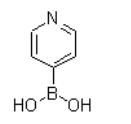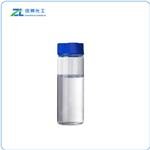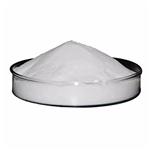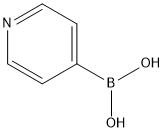What is Pyridine-4-boronic acid?
Feb 13,2020

Organic boron compounds play an important role in organic chemistry, materials science and biochemistry, and can be used in organic synthesis such as hydride borylation of olefin and Suzuki coupling reaction. The B–OH group is generally stable under ambient conditions, but can also be easily condensed to B–O–B and B–OR functions, giving boroxines with six-membered B3O3 ring structures, and, in combination with alcohols, boronic esters. In the other side, C-B bond can be easily converted into C-C, C-N, C-O and C-X bonds, which are the key intermediates in the synthesis process.
It is obvious pyridine-4-boronic acid can be used as a candidate for Suzuki-Miyaura coupling reaction. Especially, as a N-containing building blocks, pyridine-4-boronic acid was employed to construct some heterocyclic compounds with superior biological activities. For instance, an efficient palladium-catalyzed Suzuki–Miyaura coupling method involving the reaction between CTV-Br3 and a variety of aryl and heteroaryl boronic acids in the presence of indolyl phosphane ligands had been developed. Much larger rim edges and cavity height had been endowed to the phenyl substituted cavitand macrocyclic compound.
Boronic acids are capable of forming hydrogen bonded homoand heterodimeric synthons as well as aggregates with reversible covalent B–O and coordinate covalent N-B bonds, which converts them into versatile building blocks that can be assembled through (i) hydrogen bonding, (ii) coordinate covalent bonds, and (iii) covalent bonds. Moreover, depending on whether the coordination environment of the boron atom is three- or four-coordinate, it can act as trigonal-planar or tetrahedral node in supramolecular aggregates. Being a pyridyl donors, pyridine-4-boronic acid was also used in coordination with metal center. Self-assembly could take place between Ag(I) and Au(I) centers and pyridyl donors to form hexagonal metallacycles and related linear complexes. Hexagonal Ag(I) and Au(I) complexes, and Ag(I) metallacycles with pyridine-type ligands rings were synthesized firstly.
References
[1]. Yu, J.-T.; Huang, Z.-T.; Zheng, Q.-Y. Synthesis, structure, fullerene-binding and resolution of C3-symmetric cavitands with rigid and deep cavities, Org. Biomol. Chem., 2012, 10, 1359-1364.
[2]. Lee, S.; You, Y.; Ohkubo, K.; et al. Mechanism and Fluorescence Application of Electrochromism in Photochromic Dithienylcyclopentene, Org. Lett., 2012, 14(9): 2238-2241.
[3]. Jorge, C.-H.; Domingo, S.-M.; Javier, H.-P.; et al. N-containing boronic esters as self-complementary building blocks for the assembly of 2D and 3D molecular networks, Chem. Commun., 2012, 48, 4241–4243.
[4]. Fulong, C. R. P.; Kim, S.; Friedman, A. E.; et al. Coordination-Driven Self-Assembly of Silver(I) and Gold(I) Rings: Synthesis, Characterization, and Photophysical Studies, Front. Chem., 2019, 7, 567-
You may like
Related articles And Qustion
See also
Lastest Price from Pyridine-4-boronic acid manufacturers
Pyridine-4-boronic acid

US $10.00/kg2025-04-21
- CAS:
- 1692-15-5
- Min. Order:
- 1kg
- Purity:
- 99%
- Supply Ability:
- 20 ton
3-Pyridylboronic acid

US $35.00-25.00/kg2024-01-09
- CAS:
- 1692-15-5
- Min. Order:
- 1kg
- Purity:
- 99%
- Supply Ability:
- 20 Ton


![82304-66-3 7,9-ditert-butyl-1-oxaspiro[4.5]deca-6,9-diene-2,8-dione;Properties;health;uses](/NewsImg/2023-09-16/6383047747154322813802221.jpg)

![82304-66-3 7,9-ditert-butyl-1-oxaspiro[4.5]deca-6,9-diene-2,8-dione;Properties;health;uses](httpss://www.chemicalbook.com/NewsImg/2020-2-13/20202131834583268.jpg)